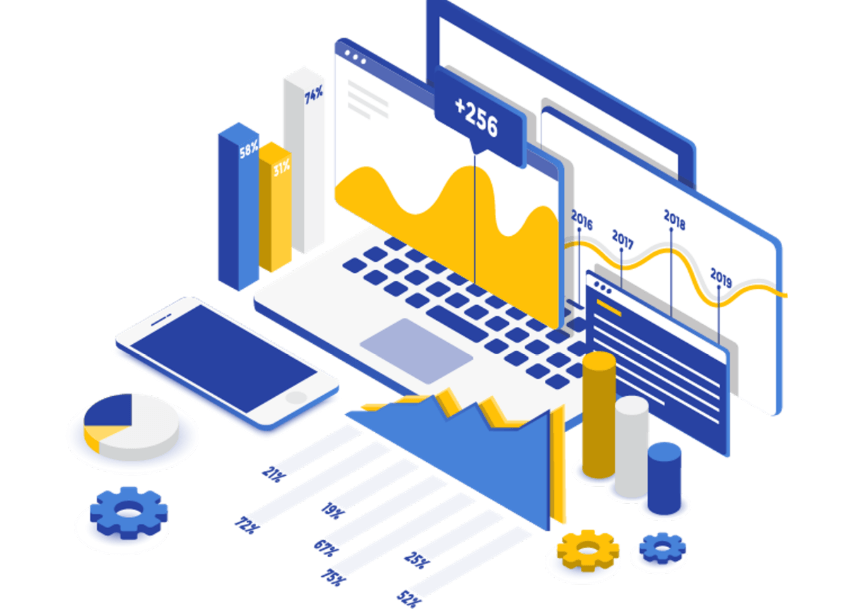“The best-run companies are data-driven, and this skill sets businesses apart from their competition.” – Tomasz Tunguz
Today’s technological world is expanding rapidly, and using data to run the business is the new standard in this competitive time. Data always helps to understand and improve business processes. It reduces the wastage of time and money. Data analytics is used to make decisions better and enables key strategic initiatives. Companies or businesses need to know how to get the most value of data that helps to improve relationships with both customers and business partners.
Data is important because it helps companies to solve problems and gives new information about the next steps to be taken. It helps to see and understand performance to make the team better through collecting and reviewing data. Data also helps to understand consumers and leads to improved business and advertising processes. Data can help you to be strategic in your approaches because it increases efficiency and allows companies to keep track of all the work, efforts, and progress you made. Thus data is mandatory now for all the companies, businesses, and organizations.
When it comes to using data, there are two terms that often seem confusing – data analytics and data analysis. This article lets you understand the difference between the two terms and why taking a data analyst course should be your next career move.
What Is Data Analytics?
Data analytics is a science and very important process of analyzing basic/raw data to make conclusions of that information. Several processes and techniques of data analytics are getting automated into mechanical processes and algorithms that work over raw data. It is a broad term that encompasses many diverse types of data analysis. It helps to find trends and answer questions to capture its broad scope of the field. A successful data analytics initiative and it’s some key components provide a clear picture of the past, present, and future. It describes the historical trends in data.
Data Analytics is a wide field that involves four primary types:
Descriptive analytics- It helps answer questions about what happened.
Diagnostic analytics- It helps answer questions about why things happened.
Predictive analytics- It helps answer questions about what will happen in the future.
Prescriptive analytics- It helps answer questions about what should be done.
Data analytics provides insights that companies are able to make efficient and effective decisions. It also provides a well-rounded understanding of business needs and opportunities. It uncovers patterns to extract valuable insights of data and unlock patterns to grow your business through specialized software and systems including automation, machine learning algorithms, and other capabilities.
What Is Data Analysis?
Data Analysis is known as a process of transforming, cleaning, and modeling data to find useful information for the business that will help in making effective decisions. It is all about analyzing the past or future and making decisions based on it. A data analyst is analyzing your business data and business process. They make the process easier with data analysis tools such as R, Python, SQL, SAS, Java, MATLAB, etc.
Types of Data Analysis: Techniques and Methods
Text Analysis- It is also known as Data Mining that discovers a pattern in large data sets using databases or data mining tools.
Statistical analysis- By using past data through dashboard statistical analysis shows “What happened?” It includes two types of analysis:
- Descriptive analysis- – It analyses summarized numerical data or complete data. For categorical data, it shows percentage and frequency whereas mean and deviation for continuous data.
- Inferential analysis- It analyses samples from complete data to find different conclusions by selecting different samples from the same data.
Predictive Analysis- This analysis shows “What is likely to happen” using previous data. It makes predictions based on past or current data.
Prescriptive Analysis- It is all about taking decisions and actions for the current situation by combining the insights from all previous analyses.
Difference Between Data Analytics And Data Analysis
Data Analytics and Data Analysis are the processes that are often treated as interchangeable terms. But there is a minor difference between both of them. The following are some parameters that show the difference:
- Form- The primary and clear difference is a matter of scale, as data analytics is a broader term and data analysis is a subcomponent of it.
- Structure- Data analysis involves the process of transforming, examining, and arranging a given data set, in a specific way, to study its individual part and give the insights. Data analytics is an overall science that manages the complete management of data. It includes data analysis, data collection, storage, organization, and all the tools and techniques used.
- Tools- Tools that are mainly used in data analytics are R, Python, SAS, Apache Spark, Excel. For Data Analysis Google Fusion Tables, KNIME, RapidMinor, NodeXL, WolframAlpha, Tableau Public tools are used.
- Sequence- Data analytics follows the sequence of business case evaluation, data identification, data extraction, data validation and cleansing, data aggregation and representation, data analysis, data visualization, and utilization of analysis results.
Data Analysis follows the sequence of data gathering, data scrubbing, analysis of data, and interpretation of the data.
- Usage- Data analytics can be used to find masked patterns, market trends, customer choices, anonymous correlations, and other necessary information. Data analysis can be used in various ways such as descriptive, exploratory, inferential, predictive ways of analysis to find insights from data.
Thus the major difference is only that Data Analytics is the broader way of analyzing the data compared to Data Analysis.
Want To Become A Data Analyst?
Data Analytics is the fastest growing and trendy field. Several organizations and companies are in need to implement data analytics into their daily operations. More positions and job opportunities are opening up for analyzing data. Anyone can try to become a data analyst by taking up online data analyst courses. There is a soaring demand for analytics professionals who can demonstrate their skills through certifications. Certified data professionals can earn higher salaries compared to non-certified peers. Nowadays Big Data Analysts are a top priority in a lot of companies, so be ready to develop the right Data Analytics skills and be a gem data professional.











